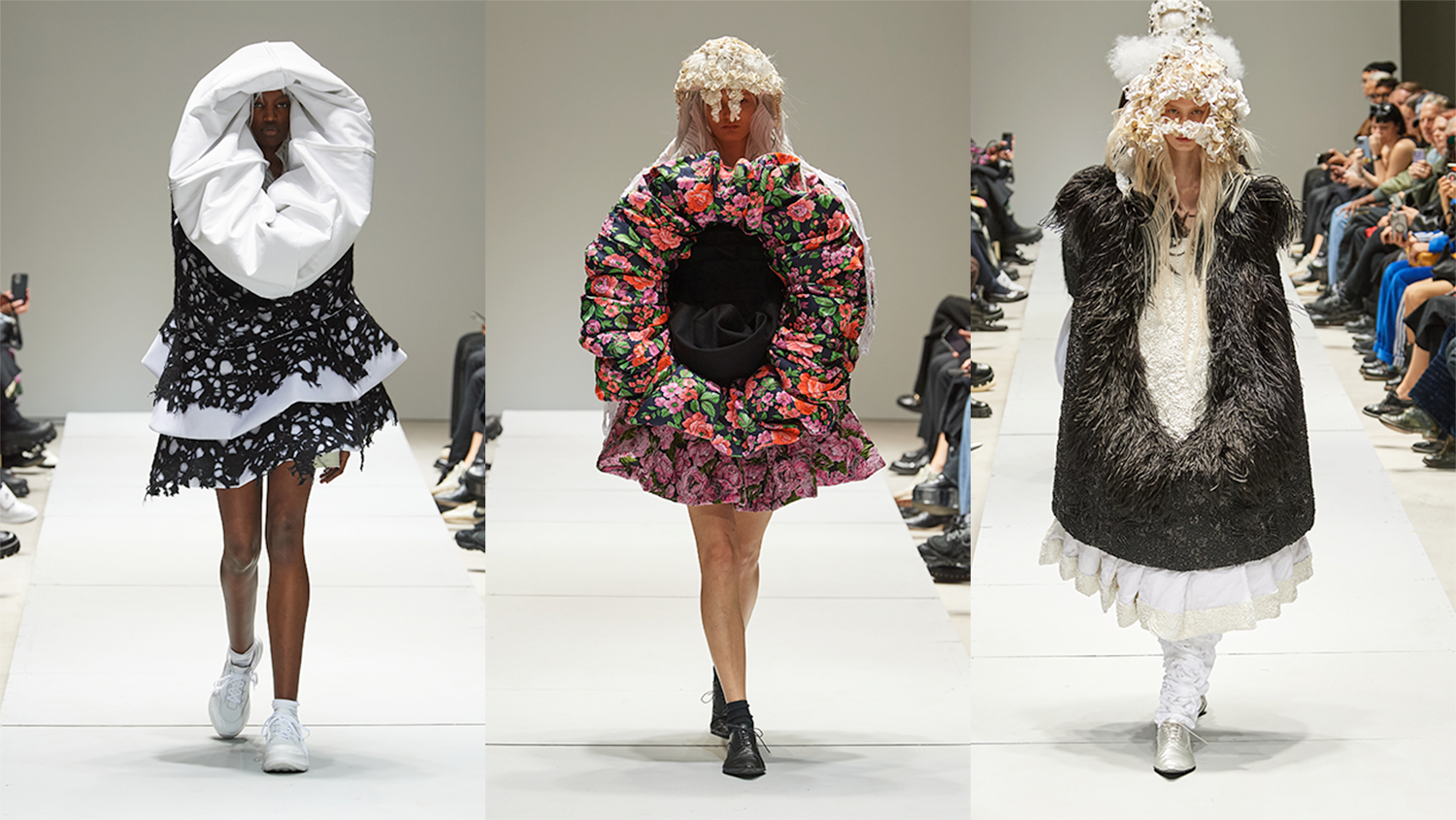As usual, the Comme des Garçons show in Paris came with a reticent explanation from Rei Kawakubo: “A lamentation for the sorrow in the world today / And a feeling of wanting to stand together.” So few words, and yet they explain so much about the collection that marked the Japanese designer’s return to the womenswear schedule. As ever, it was as cryptic and open-ended as one would expect from Rei, the Sphinx of fashion. So, here are the facts. The show opened with sculptural black looks, cylindrical and cup-shaped and often with bare legs. Towards the middle of the show, there was an interlude of all-white looks, giant swirls of card-like fabric with a dusting of ostrich feathers fluttering above them. To finish, a burst of floral jacquard structures, exploding out from the body in hyper-saturated chintz.
What does it all mean, I hear you cry! Well, trying to articulate these clothes — sculptures, really — is a futile act. Part of Rei Kawakubo’s genius is not offering too much of an explanation, and never succumbing to the trappings of the fashion system. What she does is in a league of its own, more akin to creating esoteric spaces around the body than clothes that convey a certain kind of lifestyle, or signify any kind of social ciphers. Increasingly, her collections are like sartorial Rorschach tests. Open to interpretation, they can make some weep with joy, and others with sadness — and whereas many try to forensically decode them in relation to Kawakubo herself, they ultimately serve as mirrors to ourselves, and what we as the viewers take away from them. Sure, we can think about them in the context of the sorrow of the world – war, inflation, the control of women’s bodies — but ultimately they speak to our own personal experiences, provoking us to look within to make sense of what the exteriors of these great big hulking sculptures signify.
Look into the centre of the floral satin-covered doughnut dress, for instance, and you can either see a black hole or the yolk of a sunflower in full bloom. The conical, hooded looks that opened the show — like Handmaid’s Tale bonnets from the side — framed the models’ faces through deep funnels of stiff fabric. Are their perspectives narrowing, almost as if they’re blocking out the sorrow of the world through tunnel vision? Or, are they peering out from layers of weight, emerging from the darkness and pushing through to the surface? There’s no right or wrong answer.
Rei prefers to let her work speak for itself. Not even she knows the answer to the questions so often asked about her work. Earlier this year, she told us: “The process is not something I understand, so it’s not easy to talk about.” My guess is that her womenswear especially is both about the body, and completely dismissive of it, perhaps encouraging women to take up more space, to think outside the parameters of how they’re supposed to be, or what they’re supposed to look like. You get the sense that she channels everything she sees into a kind of unbridled rage, manifested in cloth and shape. And really, witnessing such a heartfelt expression of one woman’s sorrow really is enough to bring people together. It’s why Rei Kawakubo remains one of the few designers who can invoke loyalty and devotion from her customers. Hers are clothes for people to find themselves in, beneath all the glorious layers of textures and shapes.
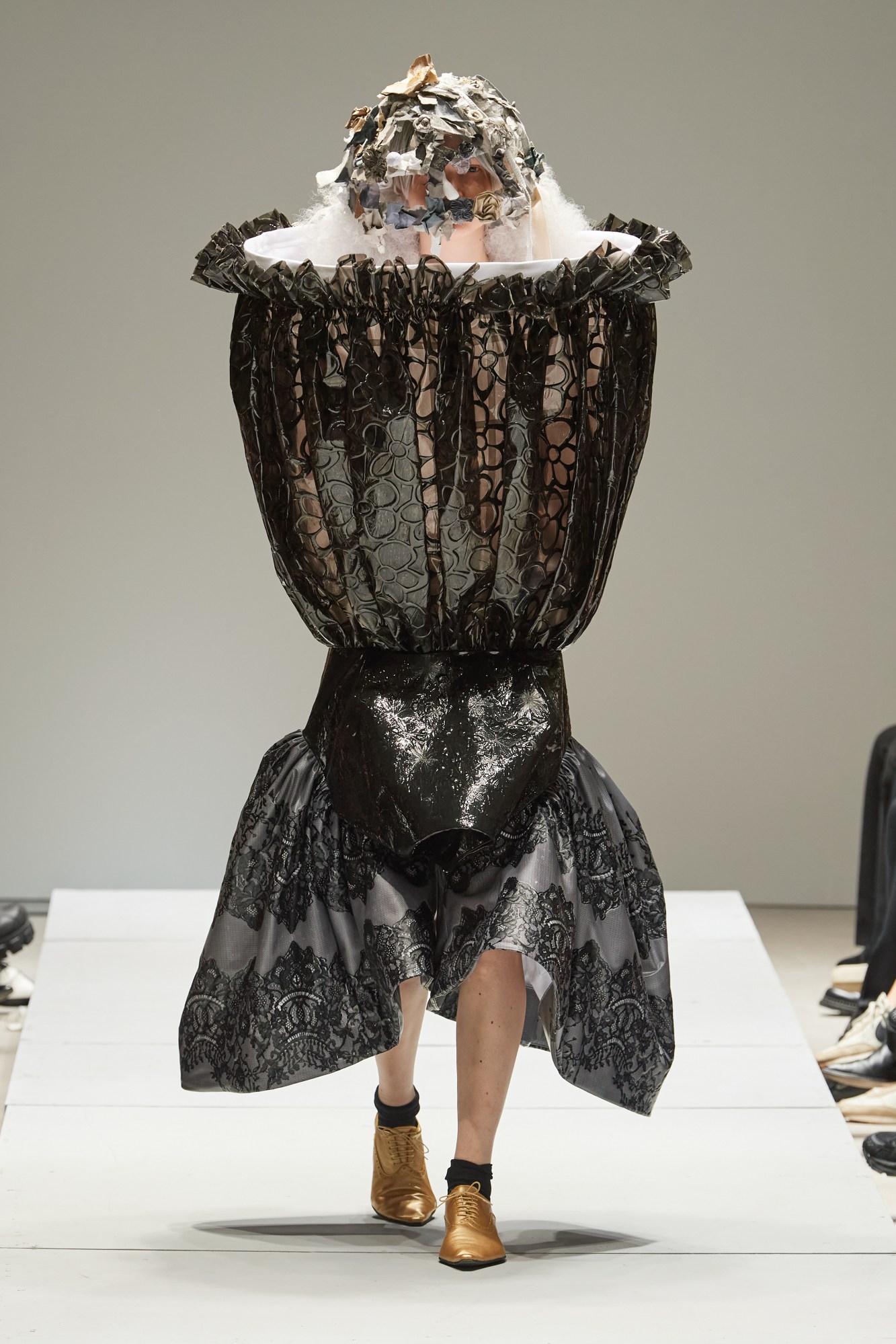
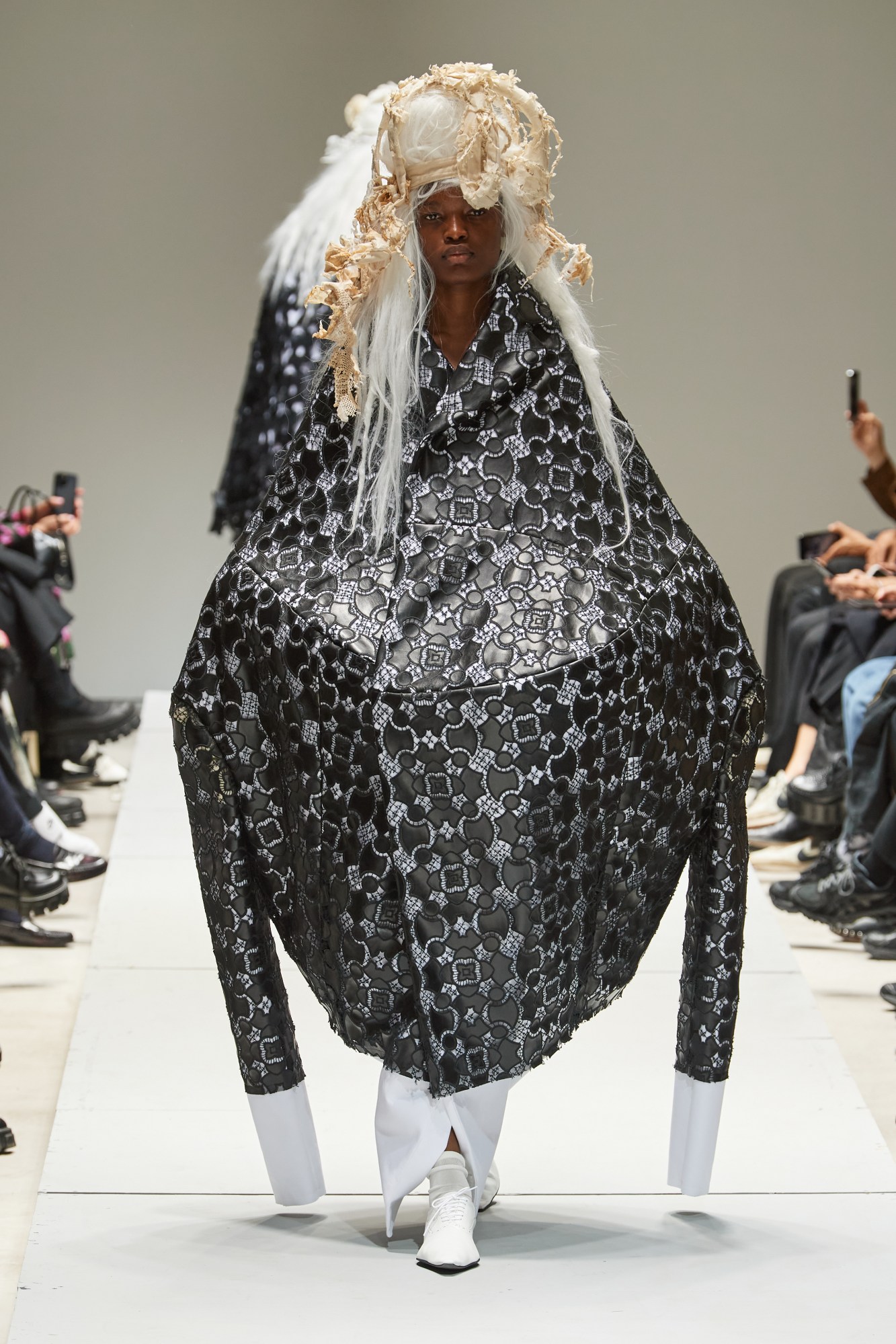

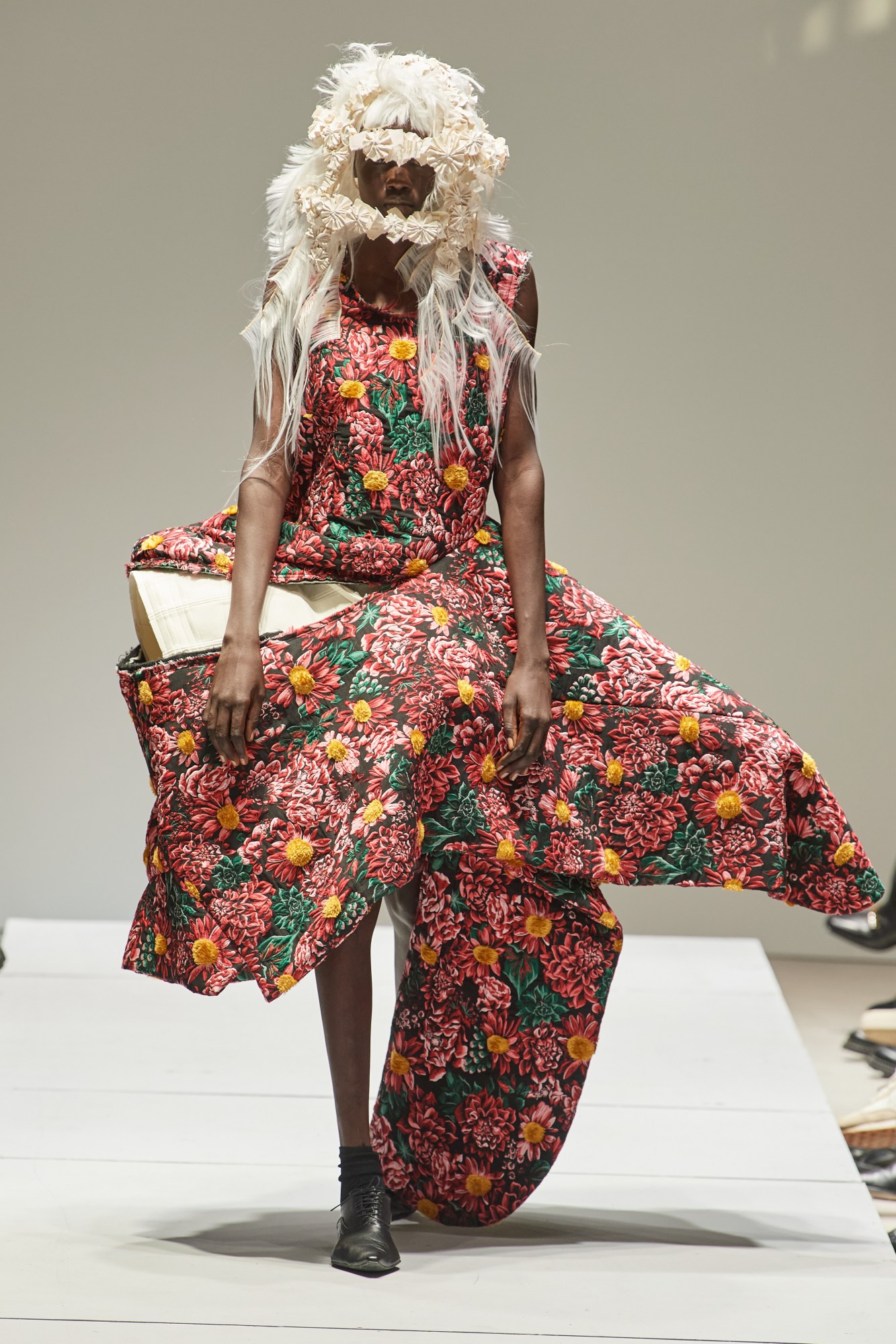
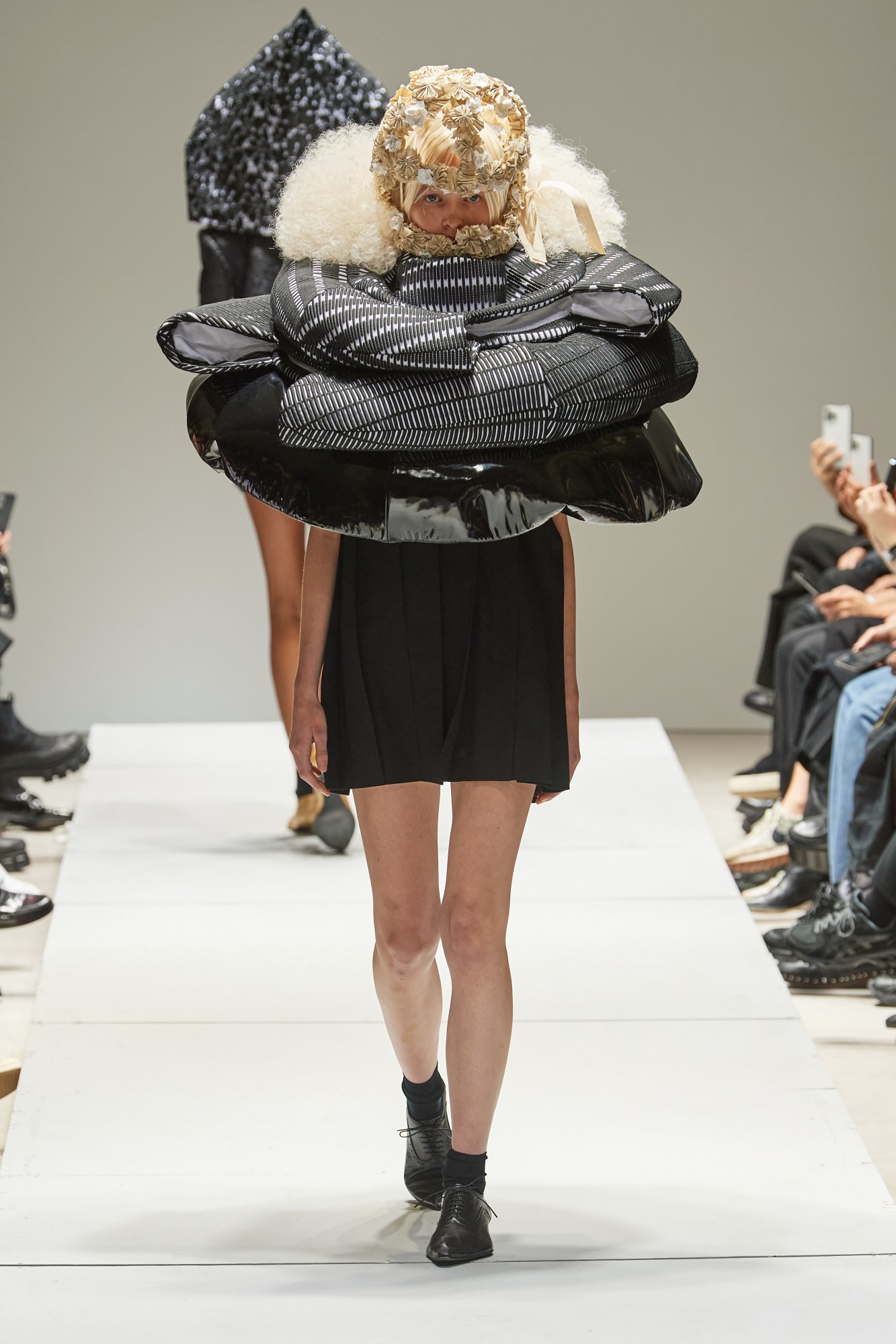


Credits
Images via Spotlight
